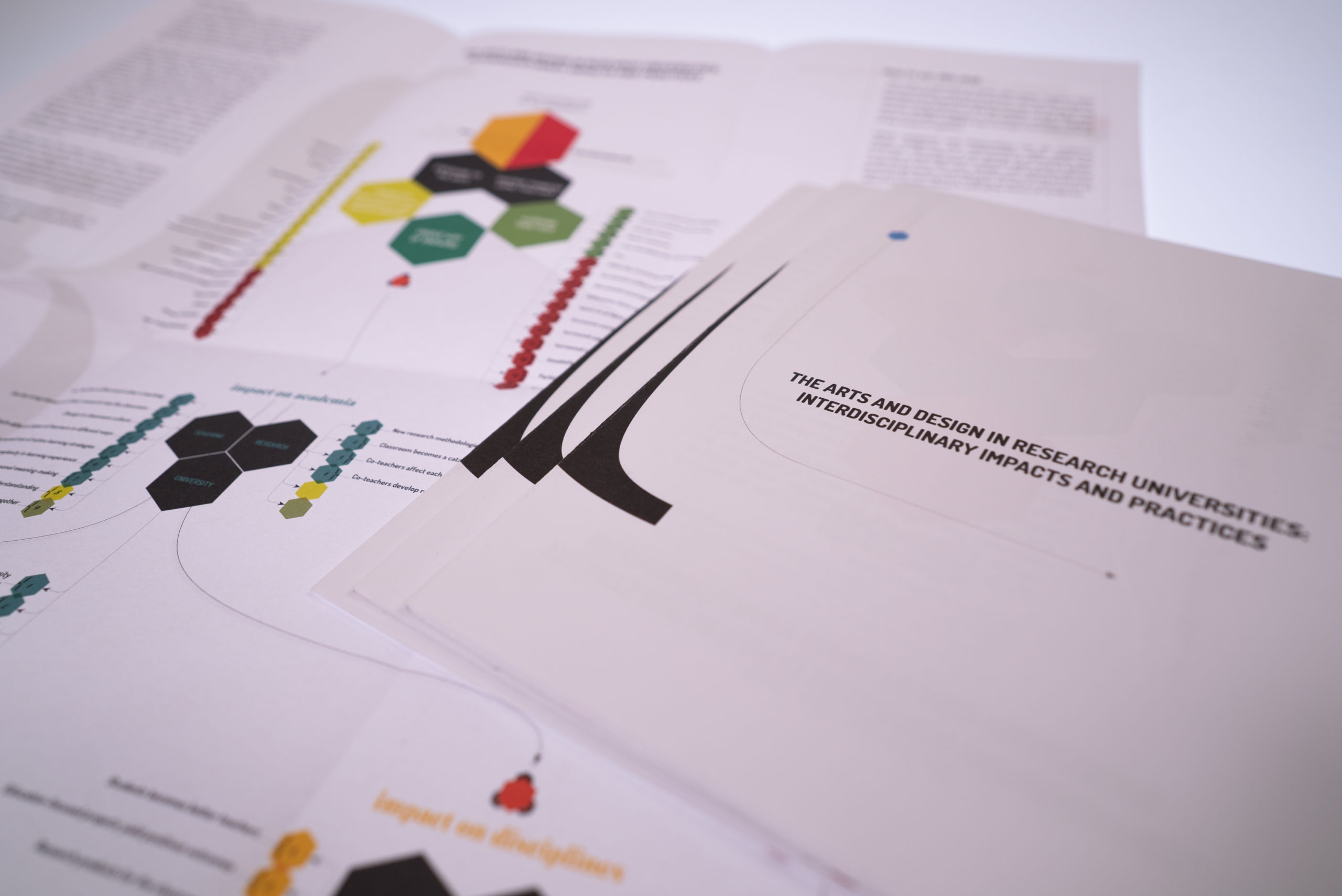Impacts Map

Arts integration improves research, promotes student success, and engages and serves the public. Research universities recognize and leverage the broader impacts of the arts through the work of higher education in five key areas: academic activities (including teaching, research, and engagement), student experience, student futures, the world outside the university, and with disciplines other than the arts. In an effort to create a broad view of this landscape, and to help research leaders locate their own work within it, the Alliance for the Arts in Research Universities has created a map and instrument for further inquiry into the impacts of arts integration. The data used to create this map are drawn from primary interviews and surveys, as well as from a secondary literature review of exemplary use-cases and scholarly sources. The map helps prompt new questions about the relationships among impacts, and it affords researchers, teachers, and leadership a more specific vocabulary and set of categories from which to ask better questions and apply new frameworks and insights. The Impacts Map can be a particularly effective tool for case-making, illustrating the impacts of arts-integrative work to university administration, funders, parents, or the community. On the reverse side of the map is the worksheet used in our Impacts Workshops to facilitate this case-making.
From 2012-2015 (as part of the Mellon-funded SPARC project), we interviewed upper-level administration, faculty, and students at 38 institutions about the impact of their arts-integration initiatives, including teaching, research, and community projects. We asked about what impact they hoped for and what impact they actually saw, as well as how they measured impact. The Impacts Map is a graphic representation of the categories of impact we surfaced, and a proposed structure of relationships among those categories.
While the impacts data is a rich source of information, it is most exciting as a jumping-off point to further exploration. First, the structure of categories and types we created is dynamic and adaptable, and we are actively seeking your input—What alternative organizations might be generative? Where do you see gaps, where important types of impact are absent? Then, while this data is an account of what impacts our member institutions have experienced, it doesn’t attempt an explanation of how these impacts function. What are the mechanics—expressed as use-case examples or demonstrated in existing scholarship—of the various impacts we encounter? We welcome your insights and recommendations. Please direct feedback to Veronica Stanich, a2ru Research Programs Manager, at vstanich@umich.edu.
Paper copies of the Impacts Map are also available to purchase through Fulcrum
Download PDF (3 MB)